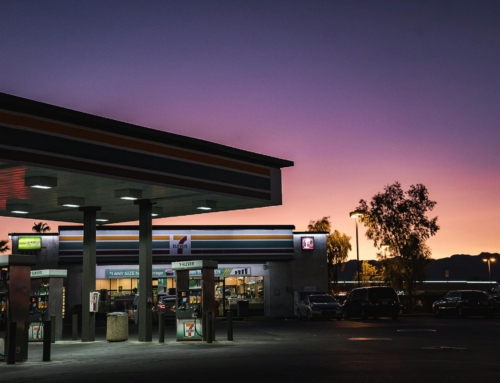This holiday season, an increasing share of gift givers are shopping with the phrase “you shouldn’t have” in mind.
Four in 10 consumers said they expect to bring at least one gift back to retailers this holiday season, according to a report in Chain Store Age. But get this: 31% of those shoppers are planning ahead for this inevitability, buying multiple variations of individual items knowing they’ll have the option to return the “fails” later.
It’s called bracketing, and it can contribute significantly to the $627.3 billion in predicted retail returns in 2023, according to a report in Insider Intelligence. Consider that in 2022, when the value of total retail returns reached $614 billion, 63% of consumers said they had bracketed.
That was up from 40% in 2017.
Retailers Enable Bracketing. Can They Free Themselves?
Three in 10 shoppers bracket because it’s so easy – many retailers make it free and increasingly convenient to ship back online purchases. In just the category of clothing, where worries over fit can deep-six an online sale, free returns have surely encouraged bracketing. It’s like having a sales person send everything to your house instead of a dressing room.
But the cost of retrieving, shipping, processing and (sometimes) restocking returns adds up – up to 66% of the price of a product, Business Insider reports. Online apparel returns alone could generate $25.1 billion in processing expenses in 2023, according to Coresight Research.
And that excludes the environmental impact. . Online retail is expected to use more than 4.5 billion pounds of plastic packaging by 2025, according to Statista. That compares with 2.1 billion pounds in 2019. And 350,000 tons of cardboard boxes end up in landfills, despite nearly 90% being recycled, reports HowStuffWorks. The environmental side effects extend to vehicle emissions and returned items going into landfills.
You Got This For Me? 10 Retail Return Policies
The trick for retailers is offering customers easy-to-do return policies that are fair enough to encourage purchases, but not so generous they encourage binge bracketing. Among the return policies detailed in Kiplinger this holiday season, there are many similarities:
- Amazon:Anything purchased from Nov. 1 to Dec. 25 can be returned until Jan. 31.
- Kohl’s:Most items can be returned up to 180 days after purchase.
- Macy’s: Goods bought from Oct. 2 to Dec. 31 can be returned by Jan. 31.
- Nordstrom: Returns are made on a case-by-case basis.
- Walmart: Purchases from Oct. 1 through Dec. 31 can be returned through Jan. 31.
- Target: Most items can be returned within 90 days.
- Best Buy: Products bought between Oct. 27 and Dec. 30 have a Jan. 13 deadline date.
- Lowe’s and Home Depot: Both DIY chains give their customers 90 days from purchase date.
- PetSmart: Fluffy has 60 days to “tell” you if she does not approve of her gift.
How Retailers Can Benefit From The Bracket Racket
One year ago, before the 2022 holiday season, 67% of retailers said they would begin charging additional shipping and restocking fees on returns made by mail, according to a report in Modern Retail. These merchants include Zara, Anthropologie, H&M and Amazon, which had added a $1 fee for some UPS returns. (Amazon also had begun flagging certain products with badges that state “frequently returned item,” USA Today reported in March. The badges advise shoppers to read product details and reviews.)
The logic is that when faced with a fee or other obstacle, customers might think twice before bracketing or making iffy purchases. The risk is the fees send shoppers to a rival retailer – 59% of consumer said tighter restrictions have deterred them from buying something, according to a report by Blue Yonder.
Here are a few ways retailers can fashion their return policies so they can live with, even benefit, from bracketing.
Extend the return basket to others. Say 1,000 people bought holiday gifts at Store A, and 30% of them come back to return one gift. That’s 300 returns – and 300 potential new sales. Now say 1,000 additional shoppers who bought gifts at a different retailer, say online, also could make returns at Store A. Viola! It now has 600 potential new sales. This is the strategy of retailers, including Kohl’s, that partner with Amazon on in-store returns. Similarly, online retailers can tap into third-party services, such as Happy Returns, which operates a network of box-free “Return Bars” at thousands of partner locations, including Ulta, Staples and the UPS Store (Happy Returns is be being acquired by UPS.) A customer could stop in to return a pair of Allbirds shoes, and leave with a laser printer.
Give private labels preferential treatment. Retailers can fashion return policies that offer more generous terms on higher-margin goods, such as their private-label lines, which have up to 30% higher margins. Target does this by offering a year-long return policy on its 45 store brands, including A New Day and the kids’ line Cat & Jack. Such a favorable policy can make Target’s window on all other returns – 90 days – seem brief. But the policy does more than persuade shoppers to choose a Target brand over a national brand. It’s designed to build confidence in the quality of the goods – a big deal with kids’ clothing. With lenient return policies influencing 71% of shoppers’ purchase choices (Blue Yonder), such strategies can transform first-time buyers into repeat loyalists.
Suggest a gift for Mother Nature. There’s the old saying, nothing’s really free. Same goes for “free” returns, because (as stated above) they take a toll on the environment. The carbon dioxide produced from e-commerce returns in 2019 (most recent year) was equal to 3 million cars driving for a full year, CBS reported. And not all of those emissions are headed to the retailer. Many products, such as cosmetics and certain apparel, can’t be restocked, so an estimated 5 billion tons of returns are dumped into landfills each year, reports Return Logic. If retailers explain these environmental side effects, they might convince more bracket-buyers to reconsider. This message can be especially effective among younger consumers, who tend to be more earth-conscious.
Lastly, Try To Market Better
Chance are, this holiday we’ll each receive a gift someone “shouldn’t have” gotten us. Sometimes, the giver likes it and therefore assumes we will. Or maybe the gift was priced right. Or it was easy.
Retailers can reduce the odds of returns by using the shopper purchase-and-return data they collected from rewards programs last year to better match member needs this year. An online questionnaire further can prompt shoppers to enter traits about the person they’re gifting for, and offer suggestions. Or retailers can categorize and display products by interests (“the romantic,” “the adventurer,” “the cook”).
And don’t underestimate the power of easy-to-follow, 3D size charts – anywhere. Virtual reality has come far, but heck, if a mannequin in the store holds a sign that states, “I’m wearing a medium” it could prevent a lot of returns.
Partner with Incendio for retail success: boost profits and cut returns with our innovative solutions! Contact us today at Info@IncendioWorks.com.
This article originally appeared in Forbes.










Leave A Comment